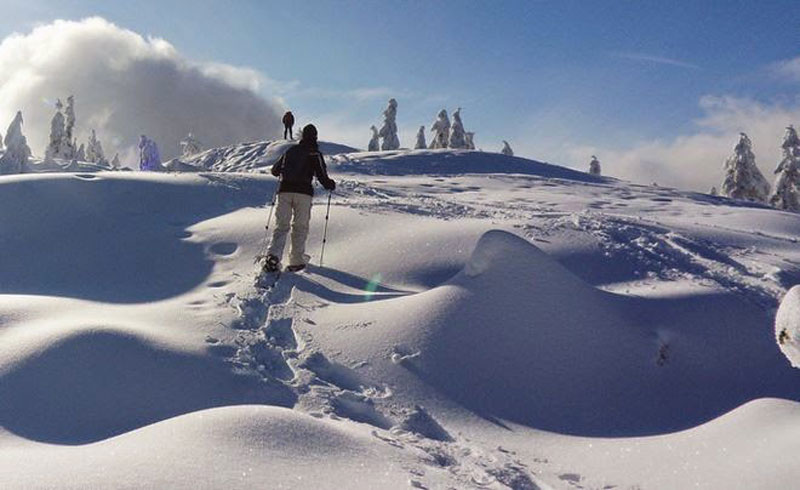
There’s no question that a good pair of poles is a boon for staying on your feet and balanced while out snowshoeing, especially if you’re tromping around in uneven terrain or snow conditions. But what exactly is the difference between a pair of trekking poles and those marketed as “snowshoe” poles?
Not much. They are essentially identical, with only three minor differences to consider. In order of importance, they are:
Snow Baskets
Trekking poles typically come with a small basket an inch or two above the tip, which helps prevent them from sinking too deeply in mud or other loose conditions underfoot. Snow, on the other hand, is much deeper and much more loosely consolidated. In order to gain purchase, and not sink to the bottom of the snowpack, you need much larger diameter snow baskets. “Snowshoe” poles always come equipped with these. Trekking poles typically do not. However, every brand out there gives you the ability to swap out the trekking baskets for snow baskets, which are usually sold as a $5 – $15 accessory.
Length
In most snowshoeing conditions, the pole tip will sink to some extent into the snow and gain purchase at a deeper point underfoot than if you were walking on solid ground. Therefore, poles for snowshoeing should be set at a longer length than trekking. (For a primer on trekking pole adjustment, see Sticks and Stones: The Pros, Cons, and Uses of Trekking Poles). This is only a concern if you’re tall and/or use a pair of shorter trekking poles (lightweight poles and ones marketed for women are usually shorter by several inches).
Shock Absorbers
This has always struck me as the most overblown benefit/feature of trekking poles. If you believe the hype, the spring-like recoil featured in many trekking poles reduces compressive forces on your hands, wrist, and upper body while going downhill. (I’m skeptical of the claim based on my own experience and have never seen any research to back this up. Plus, the on/off aspect of this feature has consistently been one of the most common issues of poles I’ve used. But I digress…) Shock absorbers provide no benefit on the loose structure of snow. “Snowshoe” poles never feature them, which also helps keep their cost lower ($50 – $80) than many styles of trekking poles ($50 – $200+).
So the upshot is this: Snowshoe poles are trekking poles. Trekking poles are snowshoe poles.